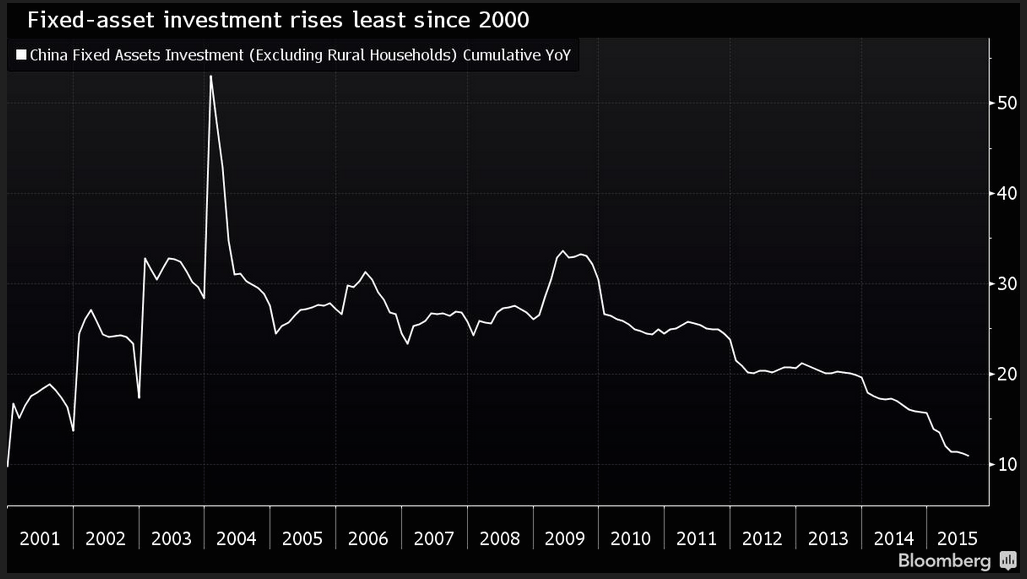Following a string of weak economic news out of both Japan and the US, it was China’s turn to disappoint which it did over the weekend with the worst fixed-asset investment data – the primary driver of China’s GDP – since 2000, as well as yet another miss in Chinese industrial output, just the latest two indications that China’s economy is grinding to a halt if not slamming into reverse.
Click on picture to enlarge

The result: just like with Japan’s latest dramatic economic deterioration, China’s data was merely taken as yet another indication the PBOC will be forced to ease more in the coming days. As Reuters reported, “the data add to expectations that Beijing will respond with more measures to prop up the economy. “The numbers fit with our view that China will have to roll out more monetary easing,” said Fumio Nakakubo, Japan CIO at UBS’s wealth management division.”
Because if it hasn’t worked so far, it is only because not enough has been applied right?
That, however, may not work for Japan where there has been a resurgence in calls for more easing out of the BOJ although as we first noted last year, and as the IMF confirmed last week, the BOJ no longer can boost QE simply because there is nothing incremental it can buy. It also explains why Reuters reported earlier that “Bank of Japan policymakers are in no mood to expand monetary stimulus this week, sources familiar with their thinking say, even as poor data challenges their presumption that economic recovery will boost inflation to its 2 percent target next year.”
There is still hope for an October rate hike, but just like September, the closer we get to the date, the more unlikely such a hike will “suddenly” become as even the BOJ is now officially out of QQE boosting ammo, and the best it can hope for is to last until 2017 without prematurely tapering.
And while the Shanghai Composite opened green only to turn red moments ago as doubt starts to creep in that someone, anyone will ease more…













Leave A Comment